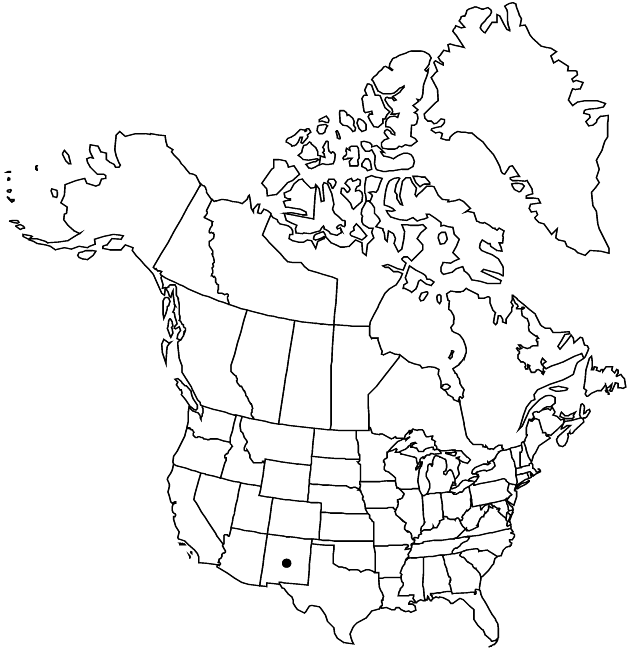Difference between revisions of "Packera cynthioides"
Phytologia 49: 46. 1981.
FNA>Volume Importer |
FNA>Volume Importer |
||
| Line 15: | Line 15: | ||
|name=Senecio fendleri var. subintegra | |name=Senecio fendleri var. subintegra | ||
|authority=Greene | |authority=Greene | ||
| − | }}{{Treatment/ID/Synonym | + | }} {{Treatment/ID/Synonym |
|name=Senecio wrightii | |name=Senecio wrightii | ||
|authority=Greenman | |authority=Greenman | ||
| Line 33: | Line 33: | ||
|elevation=2200–2900 m | |elevation=2200–2900 m | ||
|distribution=N.Mex. | |distribution=N.Mex. | ||
| − | |discussion=<p>Packera cynthioides blooms later than other Packera species at the same latitudes. It is noted by collectors as usually growing on north- or west-facing slopes in limestone-derived soils. Its cauline leaves are well developed and held at a shallow angle to the stem, giving the plant a more “leafy” aspect than other members of the genus.</p> | + | |discussion=<p><i>Packera cynthioides</i> blooms later than other <i>Packera</i> species at the same latitudes. It is noted by collectors as usually growing on north- or west-facing slopes in limestone-derived soils. Its cauline leaves are well developed and held at a shallow angle to the stem, giving the plant a more “leafy” aspect than other members of the genus.</p> |
|tables= | |tables= | ||
|references= | |references= | ||
| Line 57: | Line 57: | ||
|publication year=1981 | |publication year=1981 | ||
|special status= | |special status= | ||
| − | |source xml=https://jpend@bitbucket.org/aafc-mbb/fna-data-curation.git/src/ | + | |source xml=https://jpend@bitbucket.org/aafc-mbb/fna-data-curation.git/src/8f726806613d60c220dc4493de13607dd3150896/coarse_grained_fna_xml/V19-20-21/V20_1298.xml |
|tribe=Asteraceae tribe Senecioneae | |tribe=Asteraceae tribe Senecioneae | ||
|genus=Packera | |genus=Packera | ||
Revision as of 16:19, 18 September 2019
Perennials, 20–40+ cm; rhizomatous (rhizomes horizontal to erect). Stems 1 or 2–3, clustered, densely lanate-tomentose or canescent, tufts of arachnoid tomentum in leaf axils, or glabrescent. Basal leaves (thick, leathery) petiolate; blades narrowly lanceolate or oblanceolate, 25–100+ × 5–20 mm, bases tapering, margins entire, subentire, dentate, or wavy (adaxial faces early glabrescent). Cauline leaves gradually reduced (sessile; lanceolate to oblanceolate, entire or wavy). Heads 10–30+ in open or congested, cymiform arrays. Peduncles 0 (or relatively reduced, then densely tomentose). Calyculi inconspicuous (bractlets red-tipped). Phyllaries (8–)13, green (tips red), 3–6 mm, densely tomentose proximally, glabrate distally. Ray florets (5–)8; corolla laminae 8–10+ mm. Disc florets 35–45+; corolla tubes 2.5–3.5 mm, limbs 3.5–4.5 mm. Cypselae 1–1.5 mm, glabrous; pappi 5–6 mm. 2n = 46.
Phenology: Flowering late Jul–mid Sep.
Habitat: Loose rocky soils, steep slopes, subalpine and pine-juniper forests
Elevation: 2200–2900 m
Discussion
Packera cynthioides blooms later than other Packera species at the same latitudes. It is noted by collectors as usually growing on north- or west-facing slopes in limestone-derived soils. Its cauline leaves are well developed and held at a shallow angle to the stem, giving the plant a more “leafy” aspect than other members of the genus.
Selected References
None.
